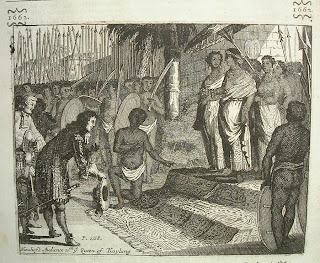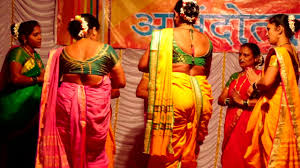Endangering Indian Manuscripts





I while reading an article about manuscripts, recollected my grandmother’s narratives of interesting stories, riddles, puzzles, sayings in Tamil called Pazhramuzhi and also about Palm leaf writings. She was a genius, intelligent and of course woman with extraordinary memory. Infact, she learnt or gained knowledge only by listening as she was illiterate. She wanted to go to school and learn but as it was a taboo in those days, especially for girls. In order to please her, her father presented her with a palm leaf written OM on it. She preserved it for long. Her father that is my great grandfather use to recite Ramayam and other Maha kavyam all inscription written on palm leaf. These palm leaf were bundled up and was called a book in those days.
The past of Indian culture can be traced in the ancient manuscripts. These manuscripts are the simple historical evidence that have great research value. It is estimated that India possesses more than five million manuscripts. Our ancestors have tried to preserve these manuscripts. Some of them are unpublished and are lying scattered in India and foreign countries. This priceless and exceptional knowledge are becoming endangered and are disappearing at an alarming rate.
Of late with my growing interest in folklores and literatures have given a way to know about manuscripts. I am indeed indebted to Professor Jayadhir Thirumal Rao- Retired from Sri Potti Sreeramulu Telugu University, Hyderabad. He is a writer, Poet, Folklorist, manuscripts collector and true fighter in real spirit. He has amazing collection of manuscript on palm leaf, copper plates, stylus or gantham (instrument used for writing on a palm leaf) of 15th to 19th century.
All about manuscripts that I know are :
Manuscriptology is study of the scientific study of manuscripts. It covers a wide range of specializations- preparation of raw material (paper, birch, bark, palm leaf, inks, stylus) study of development of scripts and alphabets; methodologies of higher and lower critics, translation, interpretation, reconstruction of texts, preservation, conversation and storage of manuscripts, designing museums and archives for manuscripts storage, linguistics, knowledge of scribal tradition, critically editing texts, cataloguing.
A manuscript is a handwritten composition on paper, bark, cloth, metal, palm leaf or any other material dating back at least seventy-five years that has significant scientific, historical or aesthetic value. Manuscripts are found in hundreds of different languages and scripts. Often, one language is written in a number of different scripts. For example, Sanskrit is written in Oriya script, Grantha script, Devanagari script and many other scripts.
Birch-bark, cloth, palm leaf were the popular source of material on which texts were written in ancient India. However, with tropical climatic condition, the ancient writers naturally turned to stone and metal to record text along with palm leaf. Copper plates called Tamrasasana were widely used to record the land grant by the king to his people.These were first recoded on cloth, birch-bark or palm leaves and then sent to coppersmith for engraving. Originals were of coursed treasured in the royal treasury. They also beared royal seal or Raja Mudra. These plates would be rectangular in shape and engraved on both sides.
It is quite interesting to note that the Garudopanishad from Athravaveda describes the vast knowledge og Garuda-Vahana of Lord Vishnu and about the Garudavidya that is meant to eliminate the effect of severe poison or visa caused by the snake or other insects bites. All these information is still safe and is available in palm leaf manuscripts. Again, since ancient times, astrology as a science of reading planetary movements, stars and their influence of humans, predictions and fortune teller was quite popular in India. Texts relating to Jyothishya Shastras written in different periods, in different languges and scripts in the from of manuscripts are conserved even today. One can get to know more about them in Southern Tamilnadu and Kerala.
Not only writting, even pictures were engraved on all these materials for writting used in ancient times. Pats and Patchitras communicated in length and today we hardly find anyone drawing those kinds of pictures.
One more significance of these manuscripts and copper plates are that it helps to establish the period and reign.
Indian manuscripts are found in a variety of languages and scripts-Newari, Gauri, Tibetan, Kannada, Naskh, and Telugu and so on. They are good source of information, knowledge. Unfortunately, the numbers of people who can read such scripts are very few. These manuscripts cover varied themes, textures, languages, calligraphies, and illustrations. There are manuscripts in most museums, district libraries, and garntha bhandars. Look in old temples, and other places of worship, handwritten manuscripts are found.
Today these manuscripts are in endangered situation. As conservation and preservation of these manuscripts has become a hurricane tasks that again needs funds, place and committed persons. Although, National institute of Manuscripts has set up centers and is carrying this work still not able to carry out in fullest lenghth.










Comments